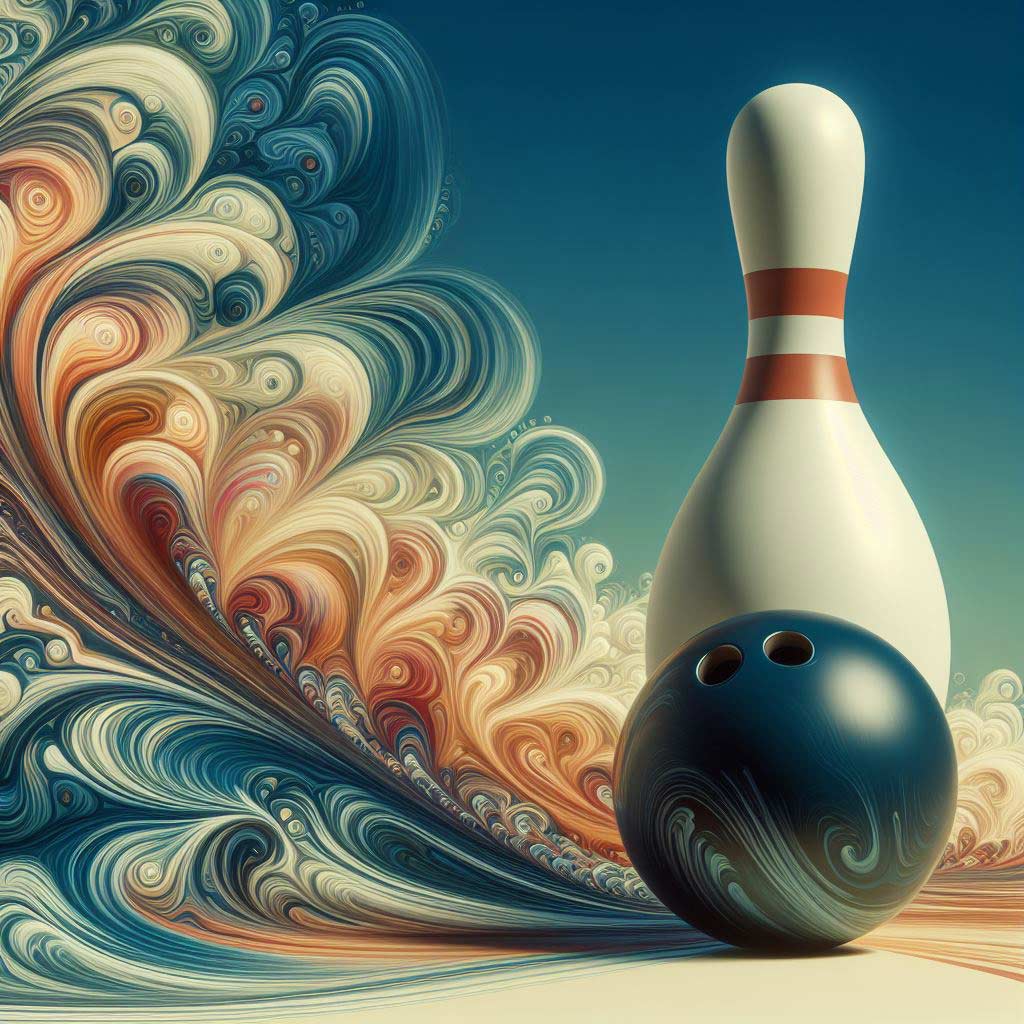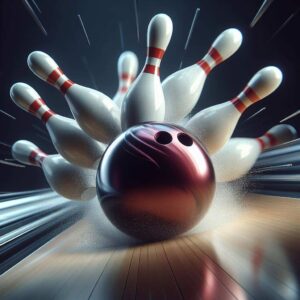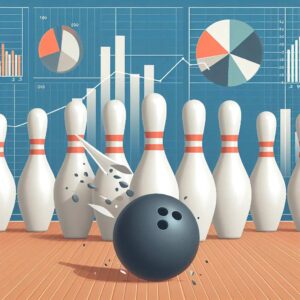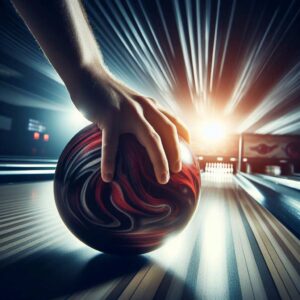Professional bowling is a sport that has captivated audiences worldwide with its blend of skill, strategy, and excitement.
Whether you’re a seasoned bowler or a spectator eager to deepen your understanding, mastering the intricate rules that govern this sport is crucial.
In this comprehensive guide, we’ll explore the essential professional bowling rules, ensuring you’re fully prepared to embrace the nuances and intricacies of this thrilling game.
The Bowling Lane and Equipment
At the heart of professional bowling lies the bowling lane, a meticulously crafted surface that demands precision and expertise. A regulation lane measures 60 feet (18.29 meters) in length and 41.5 inches (105.41 cm) in width, with a carefully designed synthetic surface that allows for consistent ball motion. Proper lane maintenance and conditioning are paramount to ensure fair play and optimal scoring opportunities.
When it comes to equipment, the bowling ball is the star of the show. Professional bowling balls must adhere to strict regulations, with a maximum weight of 16 pounds (7.26 kg) and a circumference ranging from 26.7 to 27 inches (67.8 to 68.6 cm). The ball’s cover stock, core, and overall design are meticulously engineered to provide the desired reaction and performance on the lane.
In addition to the ball, bowlers must wear appropriate footwear designed specifically for bowling, which aids in maintaining proper traction and balance during delivery. Wrist supports and other accessories are also subject to regulations to ensure they do not provide an unfair advantage or compromise the integrity of the game.
The Game Format
A professional bowling game consists of ten frames, with each frame offering the opportunity to knock down ten pins arranged in a triangular formation at the end of the lane. The objective is to score points by knocking down as many pins as possible with each roll of the ball.
A strike occurs when a bowler knocks down all ten pins on the first roll of a frame, earning them the maximum score for that frame. A spare, on the other hand, is achieved when all ten pins are cleared on the second roll of a frame. The scoring system rewards strikes and spares with additional points based on the pins knocked down in subsequent rolls.
Professional bowling tournaments can follow various formats, including single-game, multi-game, and match play events. In multi-game formats, bowlers compete over multiple games, with their cumulative scores determining the winner. Match play pits bowlers against each other in head-to-head competitions, adding an extra layer of excitement and strategy.
Legal Delivery and Fouls
Proper delivery technique is essential in professional bowling, as adherence to the rules ensures fair play and prevents potential injuries. Bowlers must maintain a legal stance, with at least one foot remaining in contact with the floor at the point of release. Lofting the ball, a technique where the ball is released above the level of the bowler’s shoulders, is strictly prohibited.
Fouls are a critical aspect of professional bowling rules, as they can significantly impact a bowler’s score. A foul occurs when a bowler’s foot crosses the foul line during their delivery, resulting in a score of zero for that roll. Foul line judges closely monitor each delivery to ensure impartial enforcement of this rule.
Lane Courtesy and Etiquette
Professional bowling etiquette is paramount, as it fosters a respectful and enjoyable environment for all participants. Players must alternate turns with their opponents, ensuring the lane remains clear and free of distractions.
Bowlers are expected to maintain a sportsmanlike demeanor, refraining from disruptive behavior or actions that could interfere with their opponents’ performances.
Oil Patterns and Lane Conditions
The application of oil patterns on the bowling lane surface plays a crucial role in professional bowling. These patterns determine the degree of traction and ball motion, affecting scoring potential and strategic approaches.
Professional tournaments feature varying oil patterns, from more forgiving “house” patterns to challenging and demanding “sport” patterns that test bowlers’ versatility and adaptability.
Bowlers must carefully assess lane conditions and adjust their strategies accordingly, considering factors such as ball surface, release angles, and rev rates.
Mastering the art of reading lane conditions is a hallmark of successful professional bowlers, enabling them to make informed decisions and maximize their scoring opportunities.
Professional Organizations and Tournaments
The world of professional bowling is governed by prestigious organizations that oversee and regulate the sport at the highest levels. The Professional Bowlers Association (PBA) and the Professional Women’s Bowling Association (PWBA) are two of the most prominent governing bodies, setting standards, organizing major tournaments, and ensuring the integrity of the game.
Professional bowling tournaments offer substantial prize purses and prestige, attracting the best bowlers from around the globe. Events like the PBA World Series of Bowling, the U.S. Open, and the PWBA Tour Finals are among the most coveted and highly anticipated competitions in the sport.
Qualification criteria for professional events vary, with bowlers often required to meet specific performance benchmarks or earn tour exemptions through various pathways.
Adherence to the rules and regulations set forth by these organizations is essential for maintaining the credibility and fairness of professional bowling competitions.
Rules for Specific Situations
Professional bowling rules account for a range of situations that may arise during a game or tournament. In the event of equipment failures, such as a cracked or damaged bowling ball, bowlers are permitted to make necessary replacements without penalty. Lane issues, such as obstructions or irregularities, may also prompt re-racks or re-spotting of pins to ensure fair play.
Appeals and protests are mechanisms in place to address disputed calls or potential rule violations. Bowlers have the right to file appeals through designated channels, with impartial review processes in place to resolve conflicts and uphold the integrity of the game.
Rules for Different Bowling Disciplines
While the core rules of professional bowling remain consistent across various disciplines, there are specific variations and adaptations tailored to different formats and event types. Team events, for instance, introduce unique rules regarding player rotations, substitutions, and scoring calculations.
The Baker format, a popular variation in team competitions, requires each player on a team to bowl consecutive frames in a specific order, adding an extra layer of strategy and communication among teammates.
Furthermore, doubles events, where two bowlers form a partnership, may have different scoring systems or lane assignments to accommodate the unique dynamics of this discipline.
Conclusion
Mastering the professional bowling rules is essential for bowlers, spectators, and enthusiasts alike. By understanding the intricacies of lane specifications, equipment regulations, game formats, legal delivery techniques, etiquette, lane conditions, professional organizations, and discipline-specific rules, you can fully appreciate and engage with this captivating sport.
As the popularity of professional bowling continues to grow, staying updated on any rule changes or modifications is crucial. Embracing the rules not only ensures fair competition but also enhances the enjoyment and excitement of witnessing the world’s best bowlers showcase their skills on the grandest stages.
Whether you’re an aspiring professional bowler or a dedicated fan, this comprehensive guide serves as a valuable resource, empowering you to navigate the intricate world of professional bowling rules with confidence and insight.





